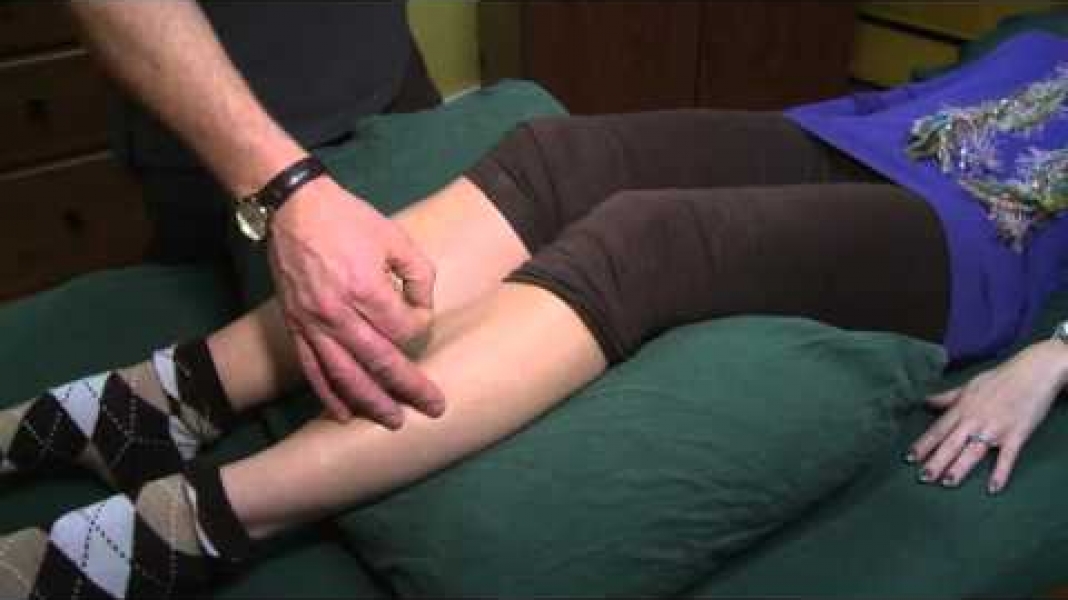
Medical labels are often misleading. Lateral epicondylitis (tennis elbow), carpel tunnel syndrome, patella-tracking syndrome, sacral iliac dysfunction – these specific conditions focus on the painful joint or muscle, and can miss the big picture…. and the solution!
We often meet people with chronic injuries who come to our clinic and who have not been fully improving with exercises. They are frustrated, and are ready to give up. Something is missing. Exercise therapy commonly focuses on strengthening the muscles around a painful joint or tissue in question. When we work with them over a few sessions using acupuncture and other bodywork techniques to help them go back to more normal movement and posture, they are able to return to exercise therapy more effectively. What’s going on here?
Here are two important related phenomena we see in chronic pain issues:
- 1. Some muscles subjected to strengthening exercises in rehabilitation are not responding. They are not undeveloped per se, but rather, they simply have been taken “off-line” by the nervous system. So the problem is often neurological, not structural! For instance, lower back problems can result in major leg muscles becoming weakened. This is not necessarily because leg motor nerves from the lower back are being “pinched” (as in sciatica), but could simply be an adaptive reflex to protect the lower back by the way one uses the leg muscles in coordination with the back. We see many examples of this phenomenon in our clinic each week.
- 2. Chronic pain often involves the muscles/joint(s) directly or indirectly remote from the painful area. For example, the shoulder is usually also involved with elbow or forearm issues; calf or knee issues usually are related to hip and core stability issues. So we look well beyond the painful issue and search for “weak” muscles further away from the problem too.
A simple and not obvious solution: From our training and experience, we use an approach to find, activate and train these “weak” muscles to fire again against the body’s compensating neurological inhibition reflexes. We test, search and isolate any “off-line” muscles individually. Here our knowledge of myotomes is important. A group of muscles that belong to a myotome are supplied by nerves that exit the spinal column at the same level (eg: if nerves from the seventh cervical segment in the neck is affected, muscles controlling elbow extension and wrist flexion will appear to be “weak”). When muscles belong to the same myotome do not fire well, the problem is nervous and “segmental”, not just local the one muscle; the whole myotome nerve/muscle group need to be activated.
It is very remarkable indeed, that sometimes a non-painful muscle far away from the pain will simply not work, yet the same muscle on the other side of the body is powerful and fully activated! This neurological condition of a misfiring muscle could be indirect, such as in a protective deactivation reflex, like a “limp” that takes stress off the injured area. Or it could be more direct like an injured or dysfunctional nerve itself as in a segmental issue described above.
Regardless, when we find a profoundly “weak” muscle, even if we can’t fully understand its relation to the painful condition, we apply a precise electro-acupuncture procedure to see if we can activate it right there, immediately! We retest the muscle strength and treat it again to see if we can get it firing again. Often we are successful! Indeed we find many “weak” muscles are not really weak structurally. At this point, more often than not, we see the client is better able to take advantage of strengthening exercises or even just attain a normal posture in movement. These are positive cycles that become self perpetuating, unlike the vicious cycles of pain and exercise before the treatments.
In fact, strengthening exercises that challenge neurologically weak muscles may reinforce the problem and make it even worse, in that a client’s less efficient muscles may compensate to do the action instead (called “cheating” in an exercise). These may lead to injuries of compensatory muscles and frustrate the client further.
The take home message: For chronic pain conditions we use an approach that restores the normal neurological function of muscles first, even if it seems intuitively wrong not to focus on the painful condition directly. This treatment approach creates a positive and self perpetuating cycle, so that clients can quickly go back to receiving benefit from exercises and normal movement – and achieving more lasting pain relief! Our therapeutic focus is shifting to improving function not chasing pain directly – indeed, a Turning Point!




